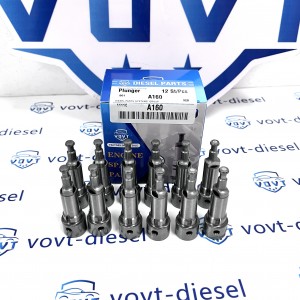New Pressure Regulator Suction Pressure Valve Control Valve 0 281 006 032 0281006032 for Auto Spare Parts
Products Description
| Reference Codes | 0 281 006 032 |
| Application | / |
| MOQ | 12PCS |
| Certification | ISO9001 |
| Place of Origin | China |
| Packaging | Neutral packing |
| Quality Control | 100% tested before shipment |
| Lead time | 7~10 working days |
| Payment | T/T, L/C, Paypal, Western Union, MoneyGram or as your requirement |
Multiphysics Coupled Analysis of Flow–Structure–Acoustic Characteristics in Control Valves
Abstract
Control valves play a crucial role in modern fuel injection and hydraulic systems, directly affecting pressure regulation, flow stability, and overall system reliability. Under high-pressure and high-speed working conditions, the valve experiences complex interactions among fluid flow, structural deformation, and acoustic radiation, which can lead to performance degradation and excessive noise. To address these issues, this study establishes a multiphysics coupling model integrating fluid–structure–acoustic (FSA) fields to analyze the dynamic characteristics and noise generation mechanisms of control valves.
The model is developed based on computational fluid dynamics (CFD), finite element analysis (FEA), and acoustic boundary element methods (BEM). The internal flow field is simulated to obtain transient pressure and velocity distributions, which are subsequently coupled with structural vibration data to predict sound radiation characteristics. The effects of valve geometry, flow rate, and material stiffness on pressure fluctuation, vibration amplitude, and acoustic intensity are systematically investigated.
Simulation results indicate that strong pressure pulsations and vortex shedding near the valve seat and throttle gap are the main sources of flow-induced vibration and noise. When the flow velocity exceeds 50 m/s, the dominant acoustic frequency shifts toward the mid-frequency range (2–5 kHz), consistent with experimental noise spectra. The coupling analysis further reveals that optimizing valve port curvature, throttling clearance, and structural damping ratio can reduce overall sound pressure levels by up to 8–10 dB, while maintaining flow stability.
To verify the simulation accuracy, an experimental test bench with acoustic sensors and laser vibrometry was established. The measured vibration and sound pressure data closely matched simulation results, confirming the validity of the multiphysics model.
This research provides theoretical and practical guidance for the noise reduction design and performance optimization of control valves. The proposed FSA coupling framework offers a comprehensive tool for understanding the interaction mechanisms between fluid dynamics, structural response, and acoustic behavior in high-pressure systems.
Keywords: control valve, flow–structure–acoustic coupling, multiphysics simulation, vibration, noise, CFD–FEA–BEM



























